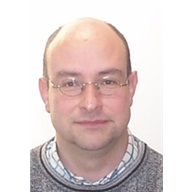MATChING-project
Generation of electricity requires large quantities of cooling water. This is not only true for nuclear and gas-fired power stations, but also for sustainable energy sources, such as geothermal energy. No less than 17 percent of water extracted in Europe is used for energy production. In the MATChING project, sixteen European partners, including knowledge institutions, energy companies and technology suppliers, are investigating whether it is possible to do it while using less water. Among other things, VITO focuses on water consumption in cooling towers for both traditional power stations and geothermal energy plants.
Water treatment
“Cooling towers consume huge quantities of water,” explains Johan Van Bael, project manager at EnergyVille. “A large part of this evaporates. As a result of this evaporation, the remaining water gets more concentrated and has to be discharged. We want to break this cycle... “We try to remove certain components from the water, such as calcium carbonate, to make sure that it can be used longer in the cooling tower. The methods used for this purification include membrane technology,” says Sofie Van Ermen. We are also investigating whether the use of groundwater in a closed circuit may provide an option for cooling geothermal energy plants. There is much to be gained by thoroughly examining all the water streams in the cooling towers.”
Saving water in geothermal energy plants
The new technologies are being tested throughout Europe. This is first done in a laboratory and then in pilot plants at nine test sites. Coal-fired power stations in Italy and Spain and a nuclear power station in France are among the participants. “On the Balmatt site in Mol, we are researching the possibilities for using less water in the geothermal energy plant,” says Johan. “We are also investigating whether coatings may offer a solution to the corrosive nature of the geothermal groundwater”
On the market
MATChING stands for Materials & Technologies for Performance Improvement of Cooling Systems in Power Plants. The project is being supported via the European Union’s Horizon 2020 programme. The MATChING project will finish in 2019 and the partners then intend to launch the developed and demonstrated products on the market. This will make European energy producers more sustainable and more efficient.



